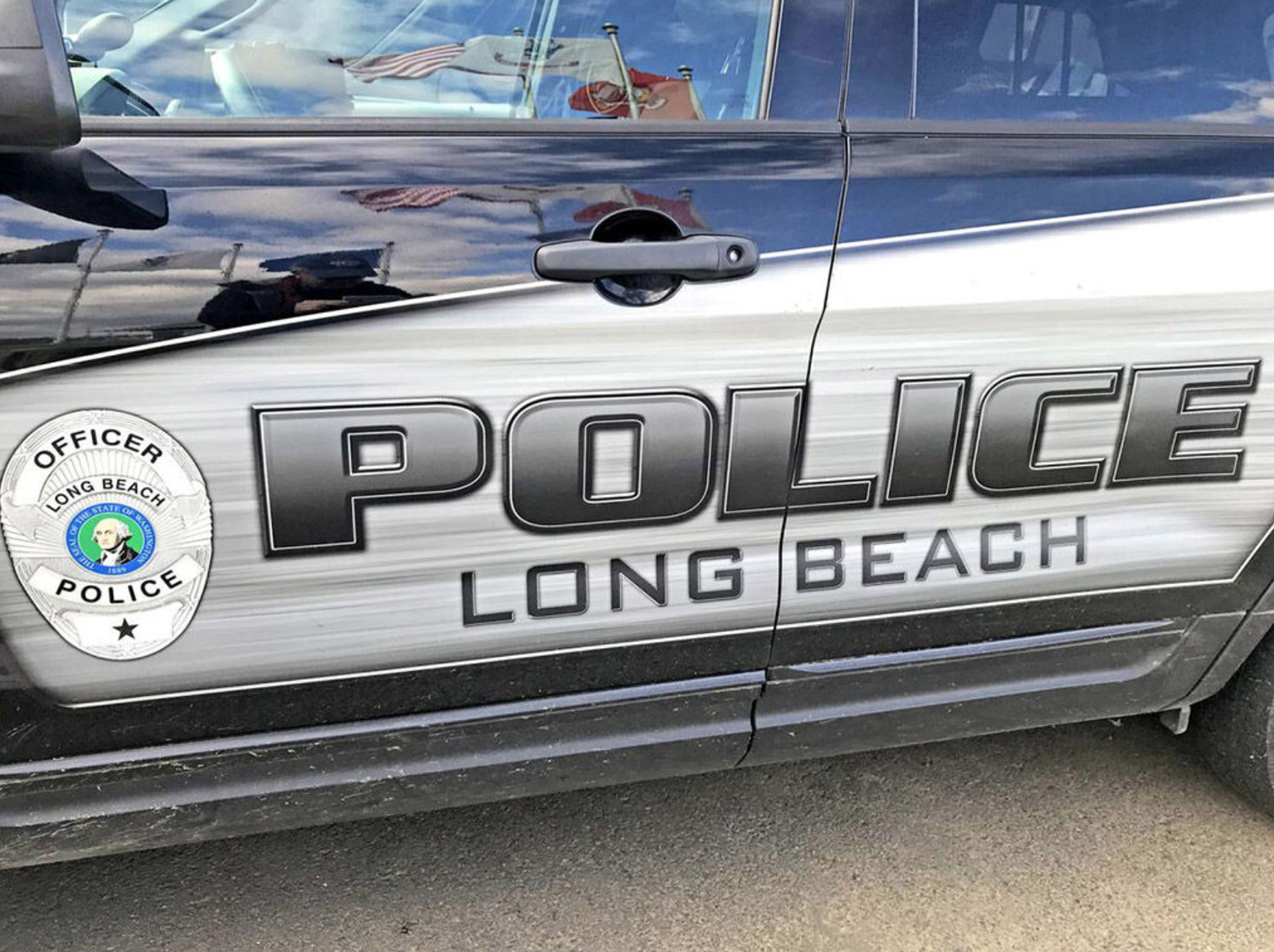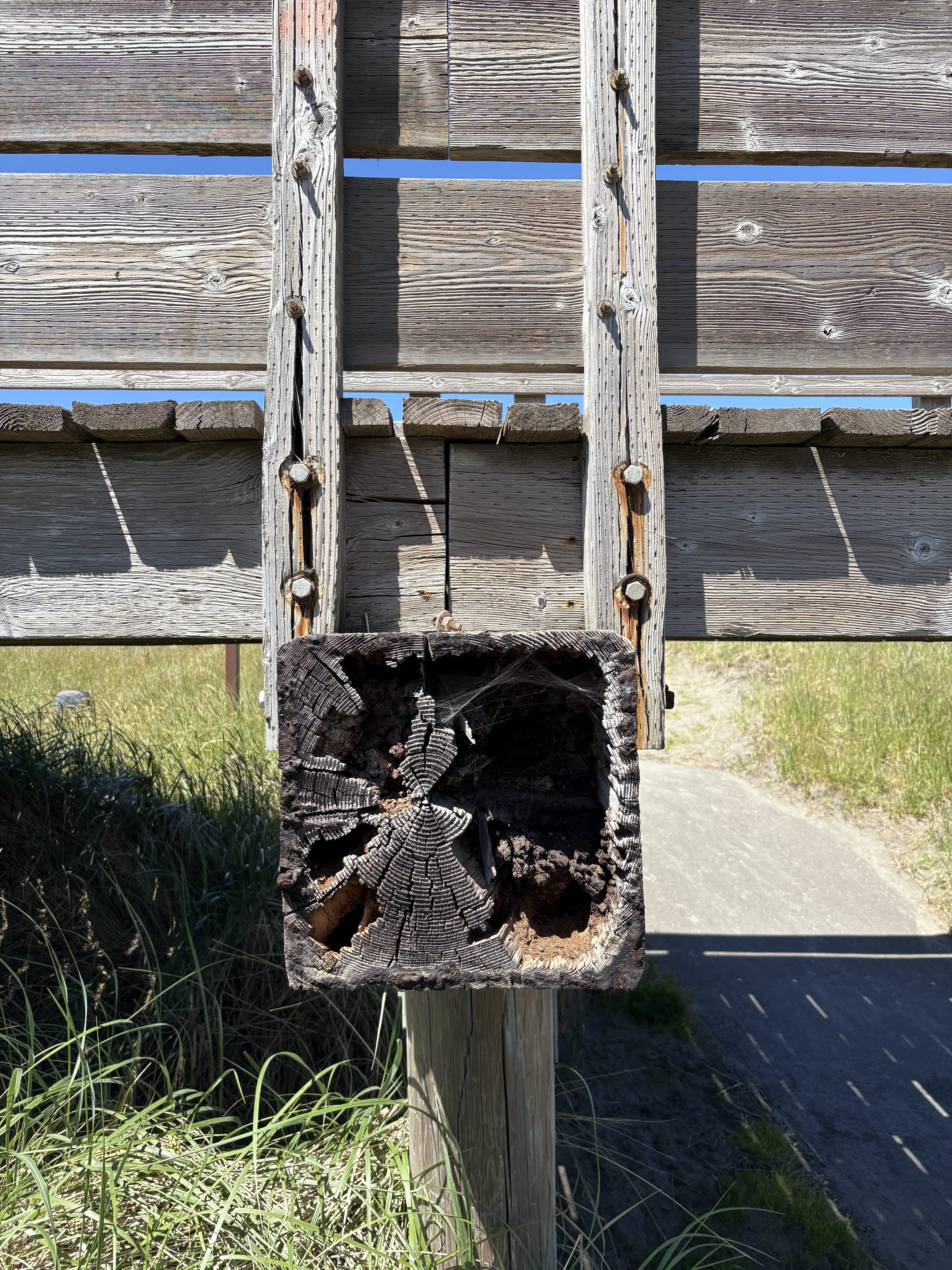Saints or Sinners? Characters of Pacific County: Kindly couple at the heart of Oysterville
Published 2:20 pm Thursday, September 12, 2024

- Bert Andrews’ 1911 Winton. Bert Andrews (1886-1961) of Oysterville was in the vanguard of innovation and invention. His first car, a 1911 Winton, arrived at Oysterville by barge from Raymond. To learn how it operated, he took it completely apart and then rebuilt it, piece by piece. He quickly became the recognized authority on automobile mechanisms and, as more cars began to arrive on the peninsula, Bert was the person car owners turned to when they had difficulties.
Minnie and Bert Andrews (1884-1952) (1886 -1961)
In my earliest memories of Oysterville, the road out to the beach — at least the part I was allowed to walk along by myself — was dominated by Bert Andrews Garage and by the Oysterville Store, post office, and gas pumps, which were the domain of Bert’s wife Minnie.
Of all those enterprises, the store with its in the old-fashioned candy case and jars of penny candies — licorice whips and lemon whips, tootsie rolls and horehound drops, and so many more — was my favorite spot. If Minnie was busy with her post office duties there was plenty of time to choose how to spend my precious pennies — hard to come by during those World War II years of the early 1940s.
Tiny Minnie Copeland Andrews — less than five feet tall as I remember — was the longest-serving postmistress (from 1918 to 1945) in Oysterville’s history until Mary Munsey came along in 1969 determined to beat her record — and did so by a year! During her working years, Minnie managed the store and the post office with equal efficiency and, when necessary, pumped gas, as well, for a local or tourist in need.
Minnie also found time to gather the local news for the Chinook Observer for the last ten years of her life — no doubt a fairly easy spinoff from the store’s role as “Information Central.” It was there that Oystervillians gathered at mail time, not only to take care of postal business, but to hear the latest news — how people had survived a storm, whose relatives were coming to visit, or whether any more children had broken out with chicken pox.
Minnie’s husband, Thomas A. “Bert” Andrews, not only owned and operated the garage just a block to the east of Minnie’s domain but was considered a full partner in the day-to-day operation of the post office, store and gas pumps. From the beginning, it was Bert who made the daily mail run to the train depot in Nahcotta, delivering the outgoing mail from Oysterville and loading up his “automobile truck” with the incoming mail and packages and off-loading the day’s delivery at the post office.
Soon he was offering to pick up groceries for the neighbors — a sack of flour or a can of kerosene. In nothing flat, the enterprising Bert realized that he needed to reinstate his Uncle Sam Andrew’s store business (of my mother’s childhood in the early 20th century) and once again the Oysterville Store became the lifeline of the village.
Meanwhile, of course, there was always something doing at the Andrews’ Garage. It was a well-documented fact that Bert was a “mechanical genius.” When he got his first automobile in 1910 — a 1911 Winton and said to be the first motorized vehicle on the Peninsula — he immediately took the engine completely apart and reassembled it so that he could “see how it works.” But his mechanical interests and aptitudes didn’t stop with cars.
Even before Franklin Delano Roosevelt’s rural electrification project got to Oysterville in the spring of 1936, Bert rigged up a Delco system in his barn. The power was enough to supply a single light bulb or two to most houses in town, but it was “lights out” each night at 10 o’clock when Bert and his wife, Minnie, went to bed.
Both Bert and Minnie were community-minded in other ways, as well. During the 1930s when the Oysterville Cemetery annual clean-up was still being done as a community project, they sponsored the event, setting a date in May to get things in order to have the cemetery looking its best for Decoration Day.
Minnie took care of letting “everyone know” in the weeks ahead when they came in for mail or milk. After a morning of clearing brush and trimming around gravestones, a potluck dinner was held at the Andrews’ home. In the afternoon, a second session of cleanup followed with everyone sharing memories and speculations about the various “old-timers” named on the worn and mossy grave markers.
There aren’t many of us now who remember Bert and Minnie Andrews, but those who do think of them with fondness and miss their many willing contributions to the little village of Oysterville.









